
Smart DIY Pantry Ideas That Maximize Space and Style
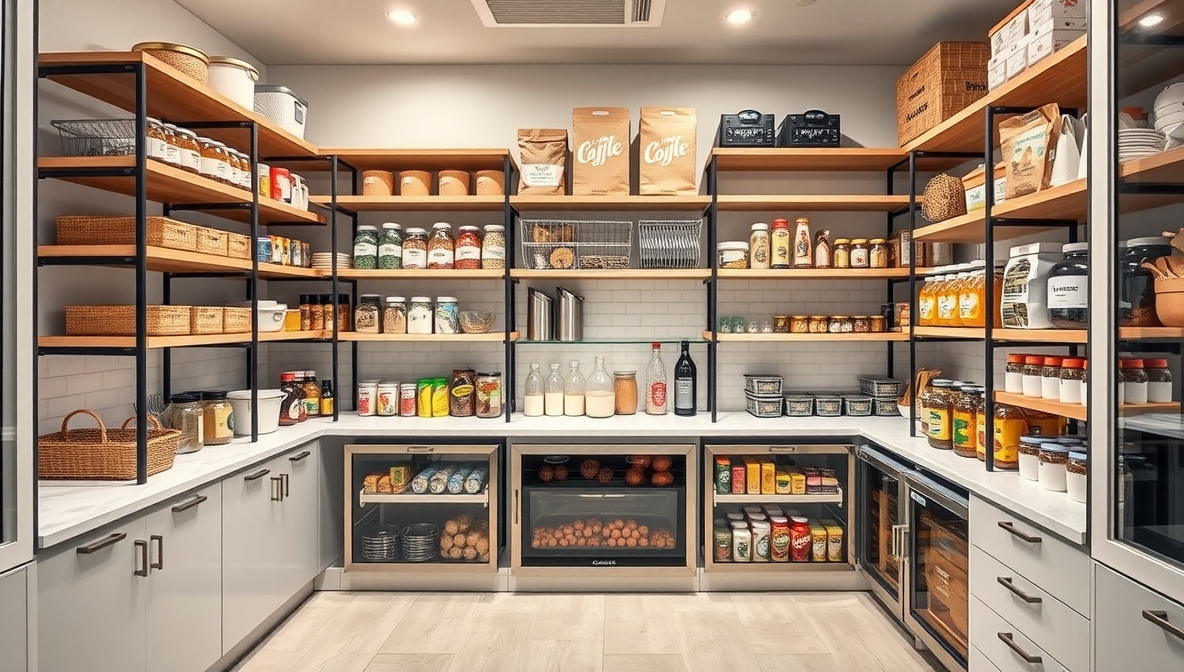
A well-organized pantry brings order to daily routines and saves time during busy moments. Small changes with creative DIY solutions can turn even the tiniest storage area into a functional and stylish space. Clear jars, labeled baskets, and clever shelving make ingredients easier to find while also giving the pantry a polished appearance. A little effort with thoughtful design choices eliminates clutter and makes cooking more enjoyable.
Repurposed items often work just as well as expensive organizers. Wooden crates can hold canned goods, mason jars display grains beautifully, and wire racks expand shelf space instantly. Simple tools and budget-friendly materials allow anyone to customize their pantry without overspending. Thoughtful placement of containers and bins ensures every item has a designated spot, making restocking effortless.
An inspiring pantry also reflects personal style. Pops of color, chalkboard labels, or patterned liners add personality while keeping the space neat. With the right ideas, a pantry becomes more than storage it becomes a functional centerpiece that supports healthy habits and simplifies everyday life.
10 DIY Pantry Ideas
A well-organized pantry makes cooking easier and keeps your kitchen stress-free. You don’t need to spend a lot of money on fancy cabinets or professional organizers. With simple do-it-yourself projects, you can design a pantry that works for your space and your family.
Below are ten detailed DIY pantry ideas that are easy to set up and budget-friendly.
1. Floating Shelves for Small Kitchens
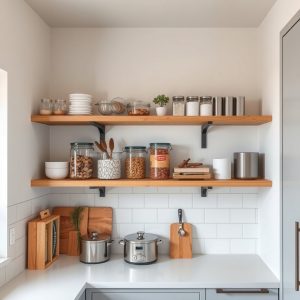
Small kitchens often lack storage space. Floating shelves give you extra room without taking up valuable floor space. Install them on empty walls, above the sink, or near the stove.
Choose sturdy wooden boards and metal brackets. Sand and paint the wood to match your kitchen. Use the shelves to hold jars, baskets, or containers. For a neat look, store similar items together. Canned food on one shelf, baking items on another. This makes it easy to find things quickly.
2. Mason Jars for Dry Goods
Glass jars keep food fresh and let you see what you have. Mason jars are cheap, reusable, and perfect for storing pasta, rice, beans, and nuts.
Label each jar with a simple tag or sticker. Clear jars reduce waste because you always know how much is left. Arrange them on a shelf or place them in a wooden crate for a rustic style.
3. Over-the-Door Pantry Organizer
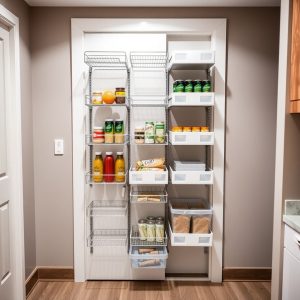
A pantry door is wasted space. Add a hanging organizer to use it wisely. Many stores sell metal racks or fabric organizers that fit over a standard door.
Fill them with spices, sauces, snacks, or cleaning supplies. This idea saves shelf space and keeps small items in view. For a stronger version, mount a wooden frame with small shelves directly on the door.
4. Pull-Out Drawers in Cabinets
Deep cabinets often hide food in the back. Pull-out drawers fix this problem. You can buy ready-made sliding drawers or build your own with wood and drawer slides.
Each drawer brings items forward, so nothing gets lost. Store heavy items like flour or sugar in the bottom drawers. Keep lighter items like snacks or spices in the top ones. This makes cooking faster because everything is within reach.
5. Pegboard Storage Wall
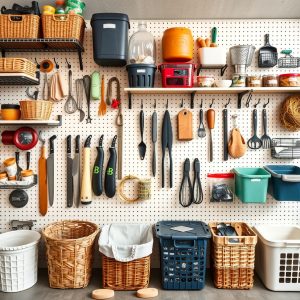
A pegboard is flexible and easy to install. Attach one to a wall or the side of a cabinet. Use hooks and baskets to hold kitchen tools, bags of food, or jars.
Paint the board in a bright color to make it look fun. Rearrange the hooks anytime you need. Pegboards are great for renters because they do not require big changes to the kitchen.
6. Repurposed Bookshelf Pantry
An old bookshelf can turn into a simple pantry. Place it in a corner or hallway near the kitchen. Add baskets, bins, and jars for better organization.
To give it a clean look, paint the shelf in white or another neutral color. Use the top shelves for less-used items and the lower ones for everyday essentials. This works well for apartments or homes without a built-in pantry.
7. Tiered Spice Racks
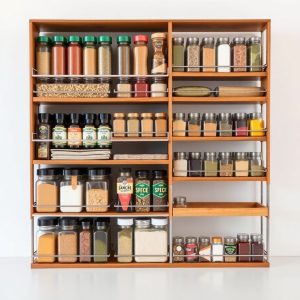
Spices often get lost in cabinets. A tiered spice rack keeps them visible and easy to grab. You can make one using scrap wood cut into steps or buy plastic stackable versions.
Arrange spices alphabetically or by type. Place cooking spices like salt, pepper, and chili powder in the front. Keep baking spices like cinnamon or nutmeg in the back. A well-arranged spice rack saves time and prevents buying duplicates.
8. Sliding Pantry Between Fridge and Wall
The narrow space between a fridge and wall often goes unused. Build a slim sliding pantry on wheels to fit there.
Use plywood, caster wheels, and a handle. Make it just wide enough for cans and jars. Slide it out to grab what you need, then push it back in to hide it. This clever trick adds extra storage in a small kitchen without taking up more space.
9. Clear Plastic Bins for Grouping Items
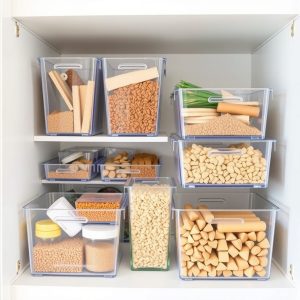
Plastic bins are cheap and very useful. Use them to group similar foods together. One bin for snacks, one for baking, one for breakfast items.
Clear bins let you see everything inside. They also keep shelves tidy and prevent spills. For kids, label bins with words or pictures so they can find their own snacks.
10. Repurposed Wooden Crates
Wooden crates give a rustic farmhouse look and provide solid storage. Stack them to create a pantry wall or use them individually under shelves.
Sand and paint them to match your kitchen style. Store potatoes, onions, and root vegetables in the open crates for better air circulation. For packaged food, add liners or small bins inside each crate.
FAQs
How do I organize a small pantry?
Use vertical space with shelves, hooks, and door organizers. Store similar items together in clear bins or jars.
What materials work best for DIY pantries?
Wood, metal, glass jars, and sturdy plastic bins work best. They are affordable and easy to clean.
Can I make a pantry without a separate room?
Yes. Use bookshelves, cabinets, or corner shelves. Even a small rolling cart can serve as a pantry.
How do I keep food fresh in a pantry?
Store dry goods in airtight jars or containers. Keep root vegetables in open crates. Rotate older items to the front and use them first.
What is the cheapest DIY pantry idea?
Repurposed items like old bookshelves, crates, or mason jars are the cheapest. They often cost little or nothing if you already have them.
Conclusion
A pantry does not need to be expensive or complicated. Simple DIY projects like shelves, jars, crates, and bins can transform any space into an organized storage area. By using what you have and adding small upgrades, you can make your kitchen more functional and easier to manage.
